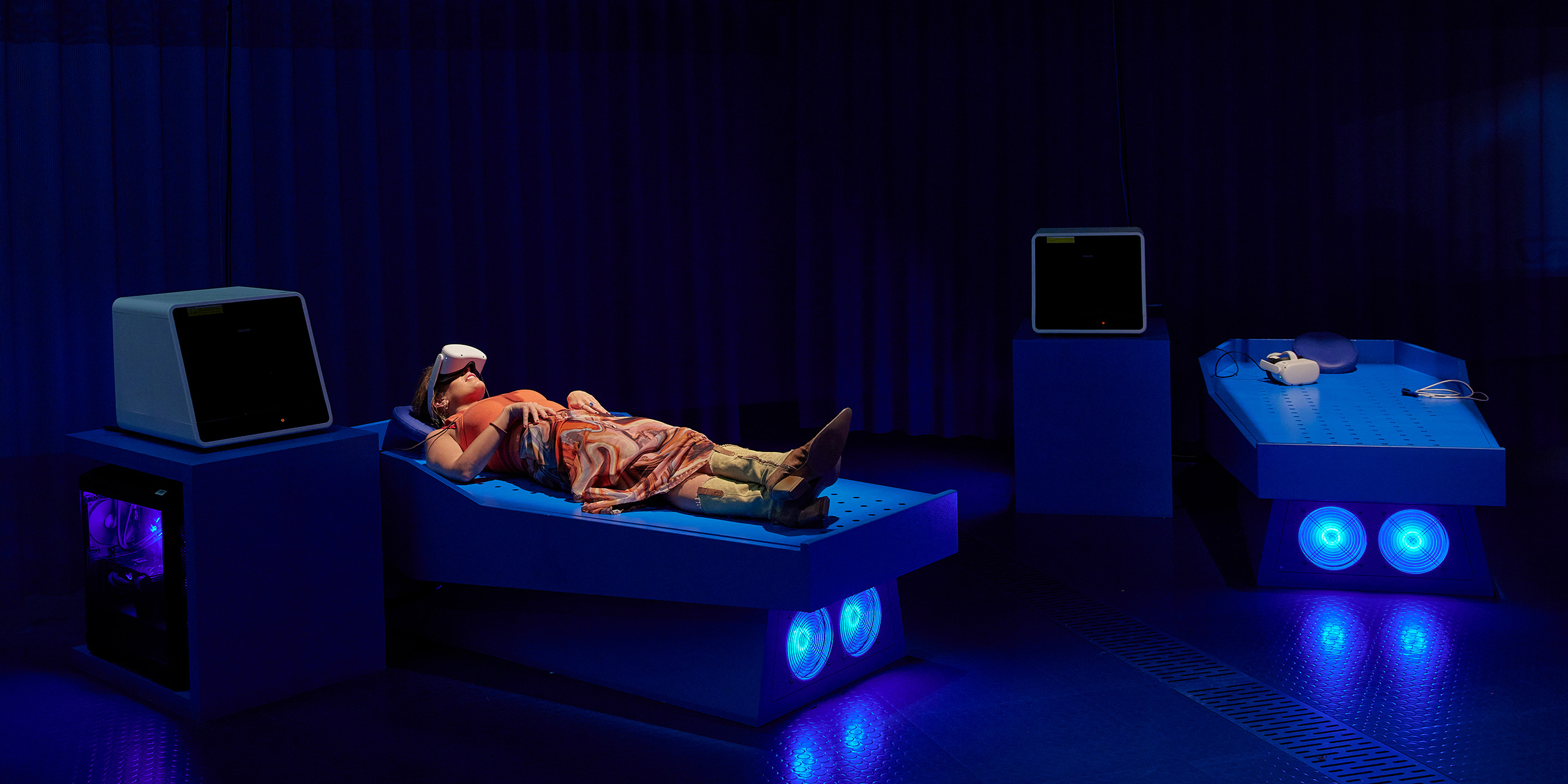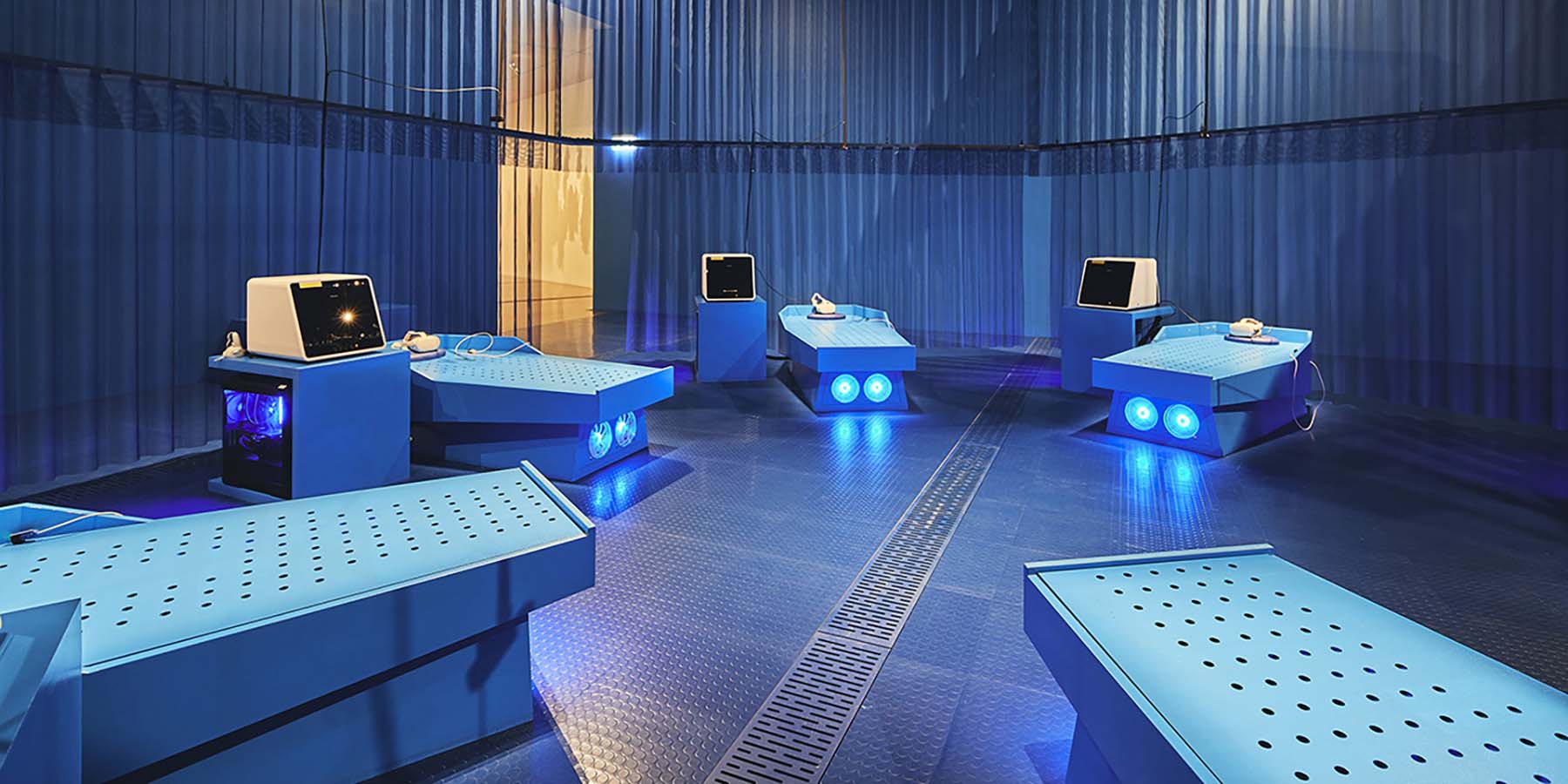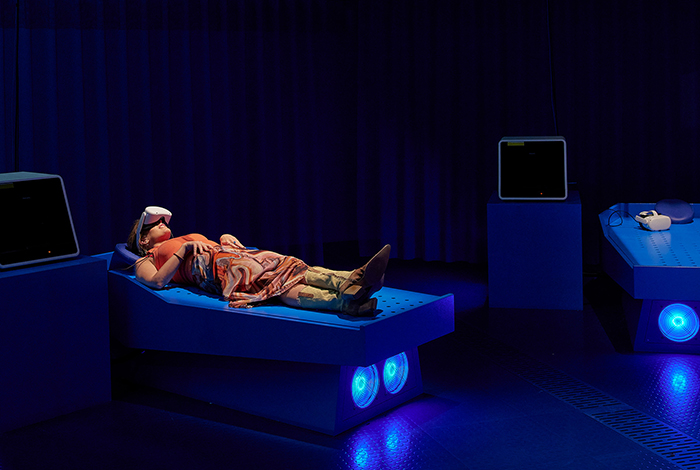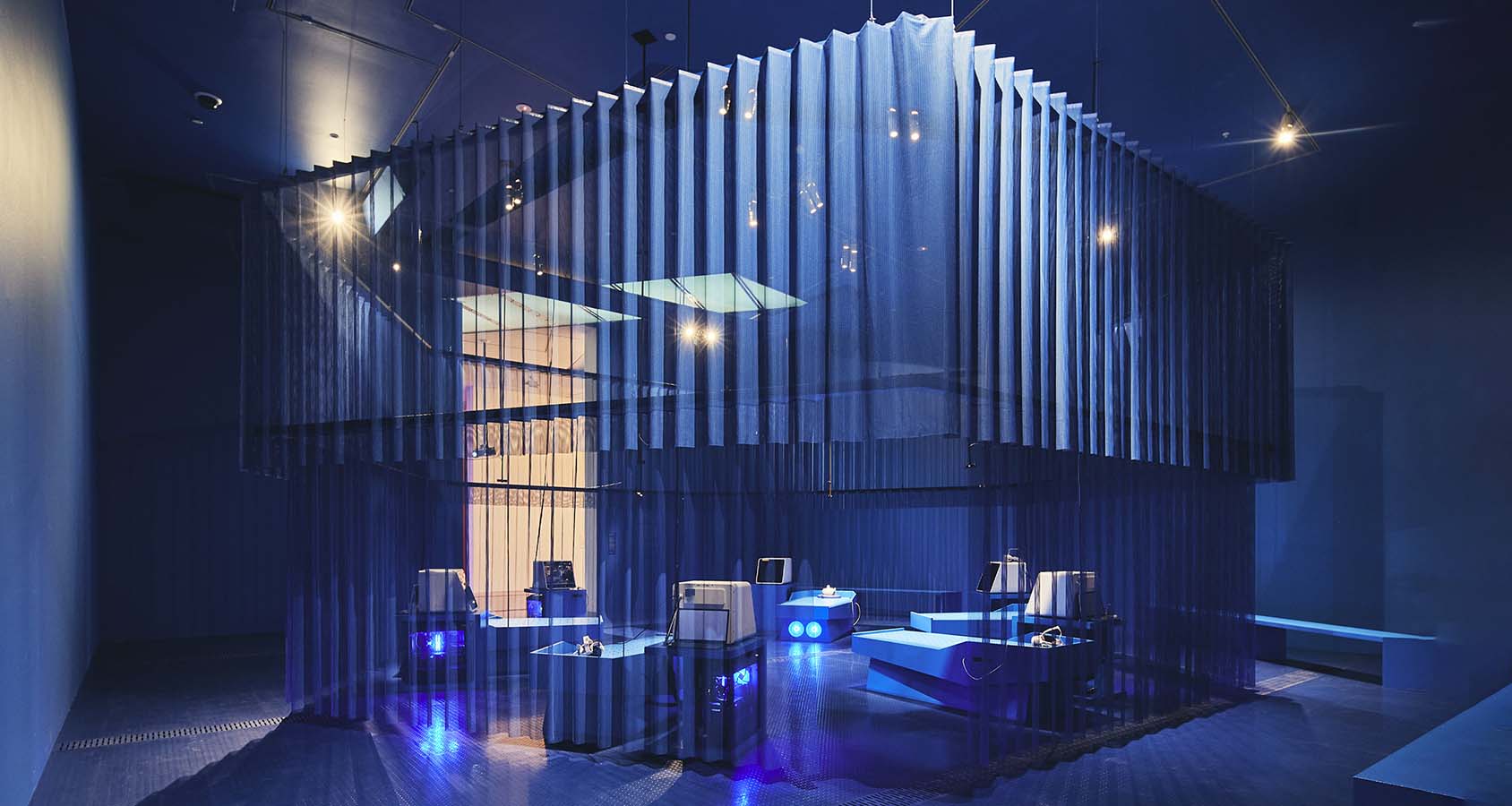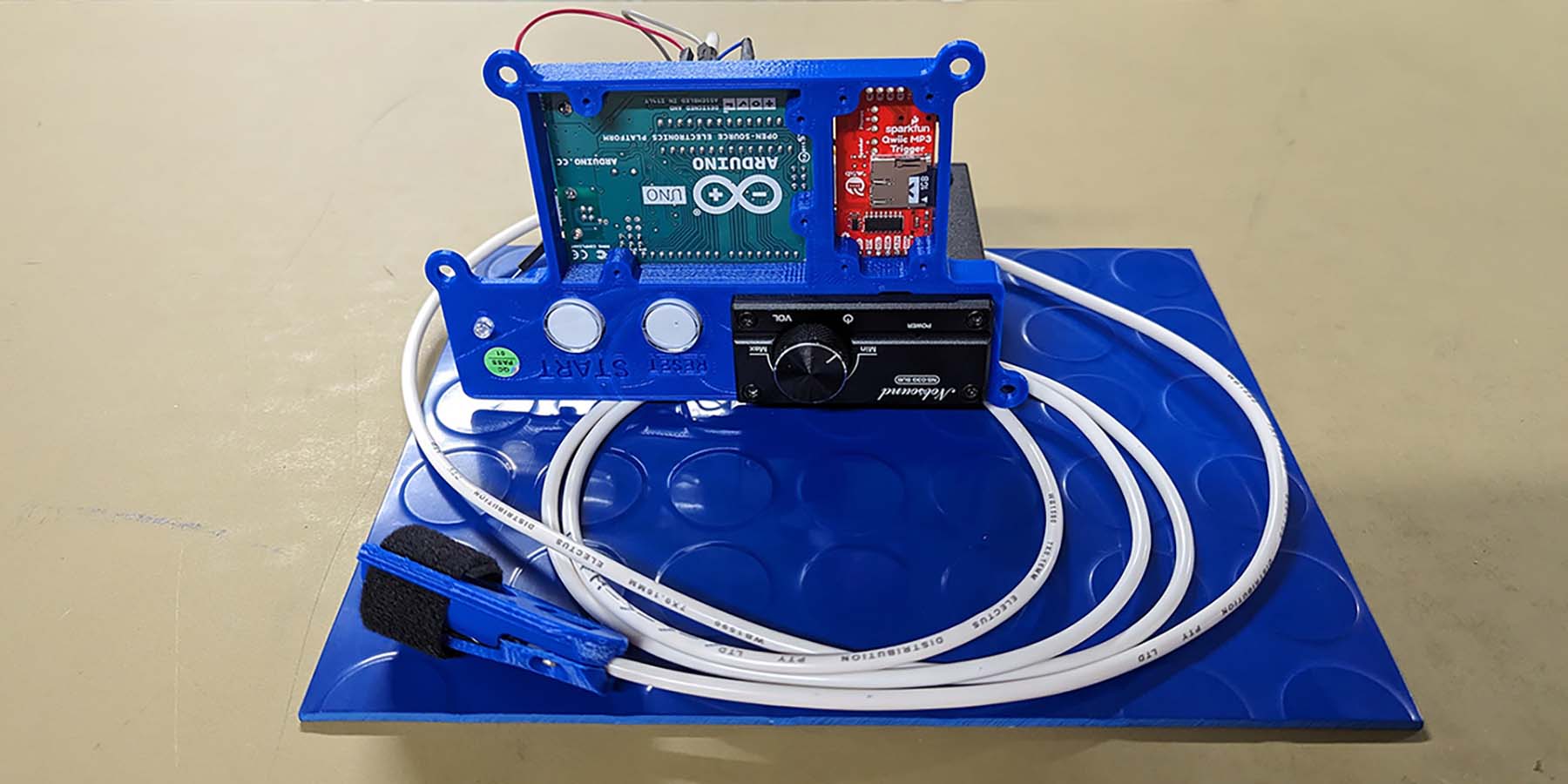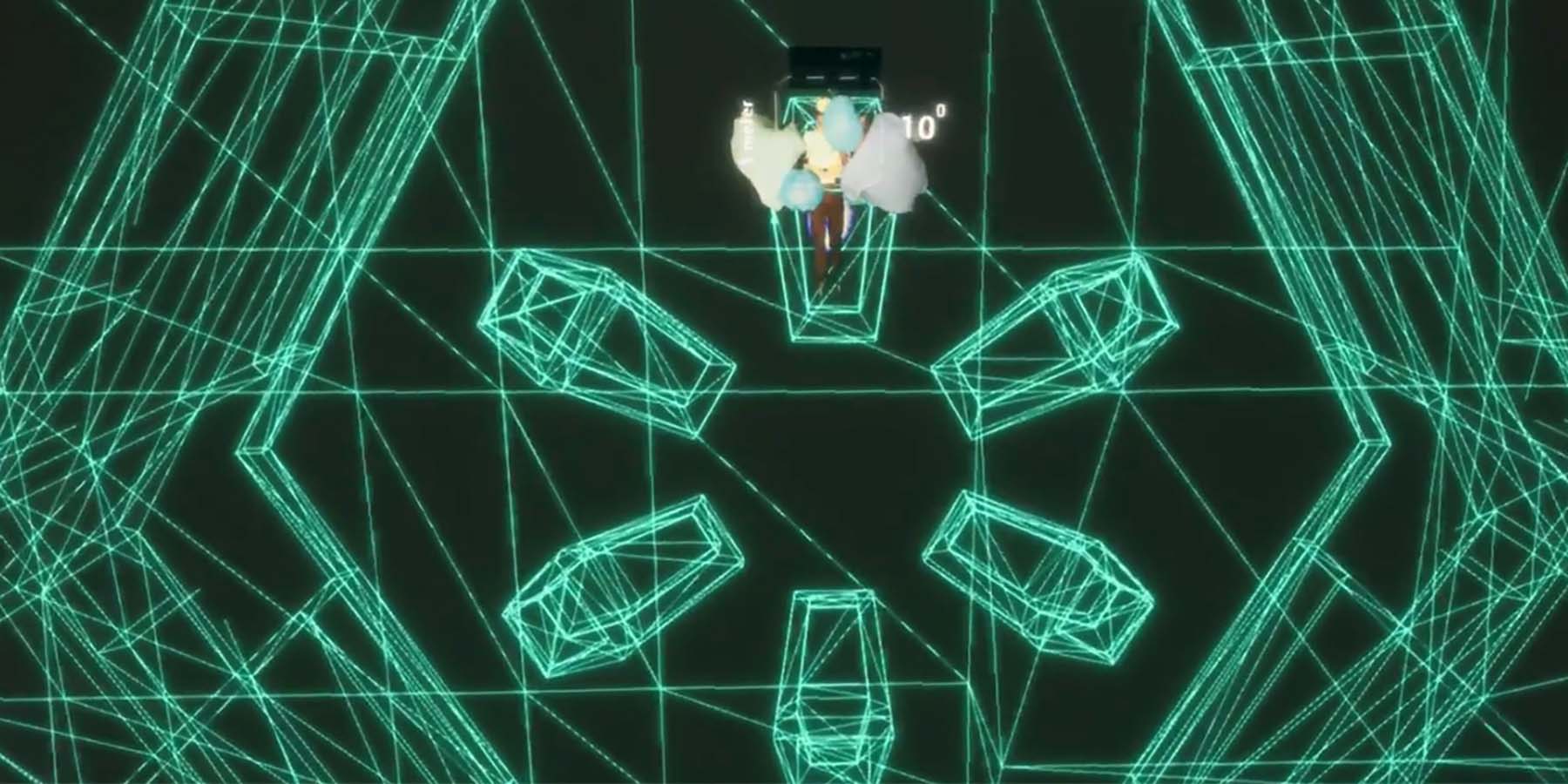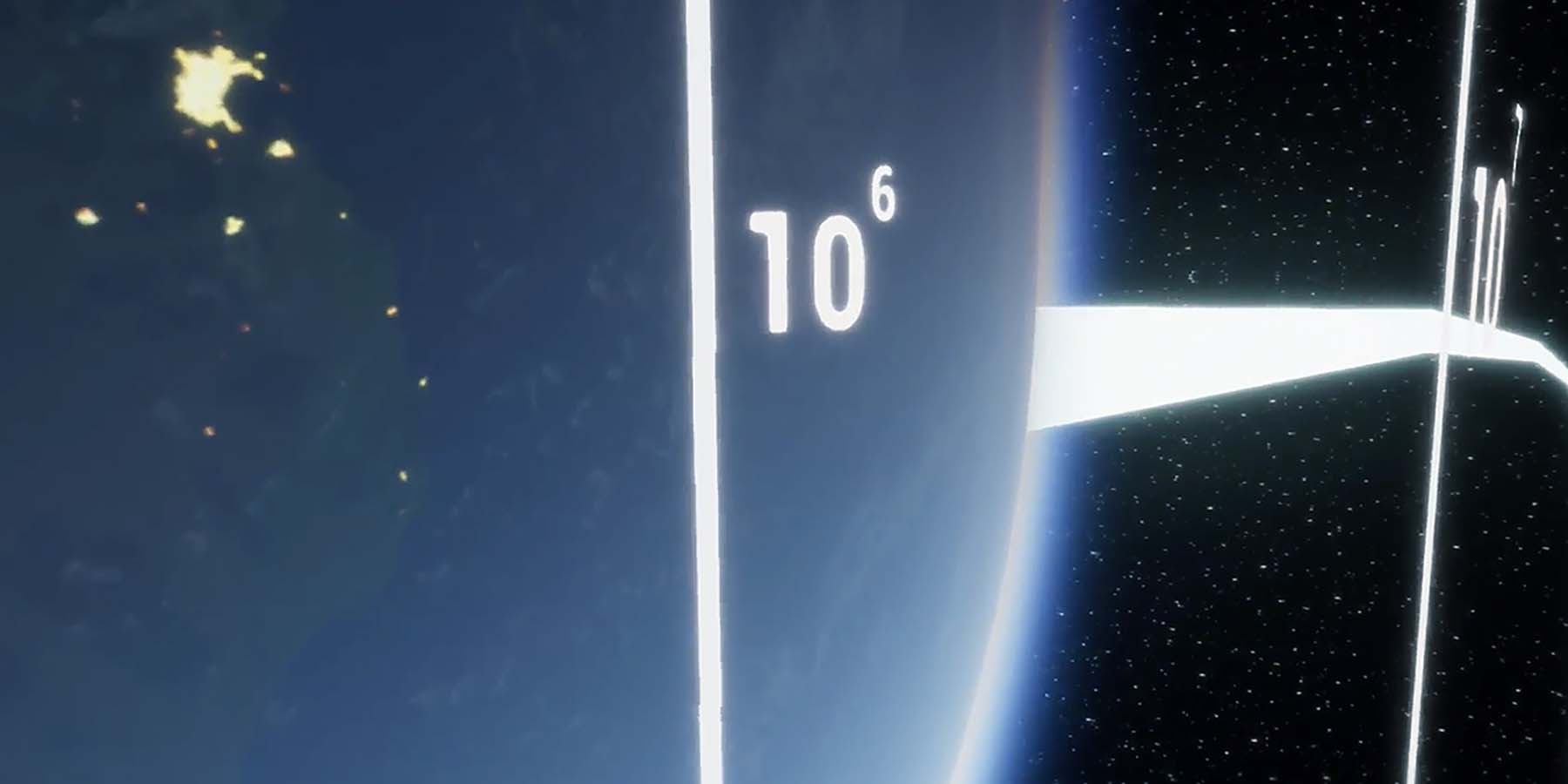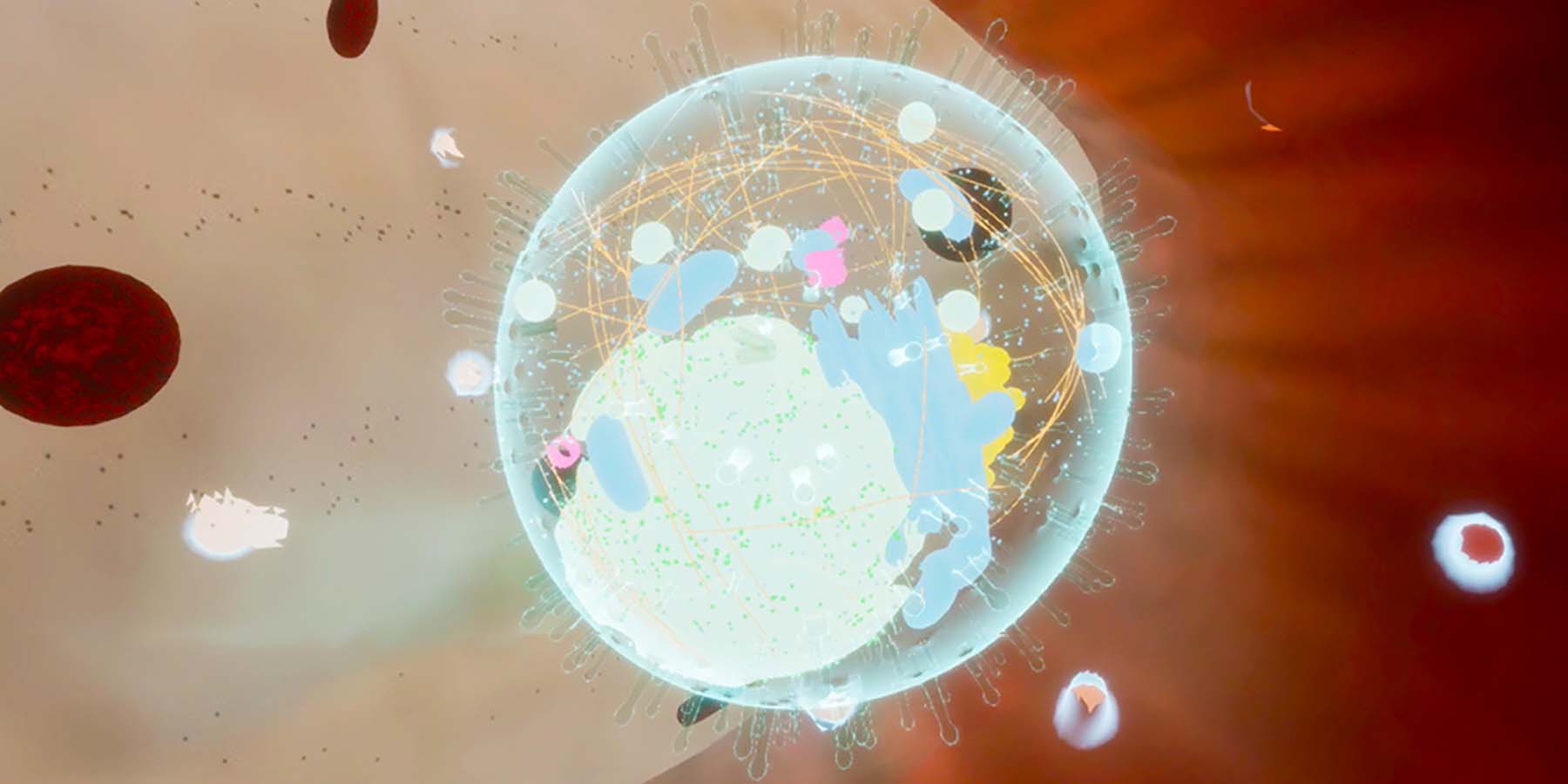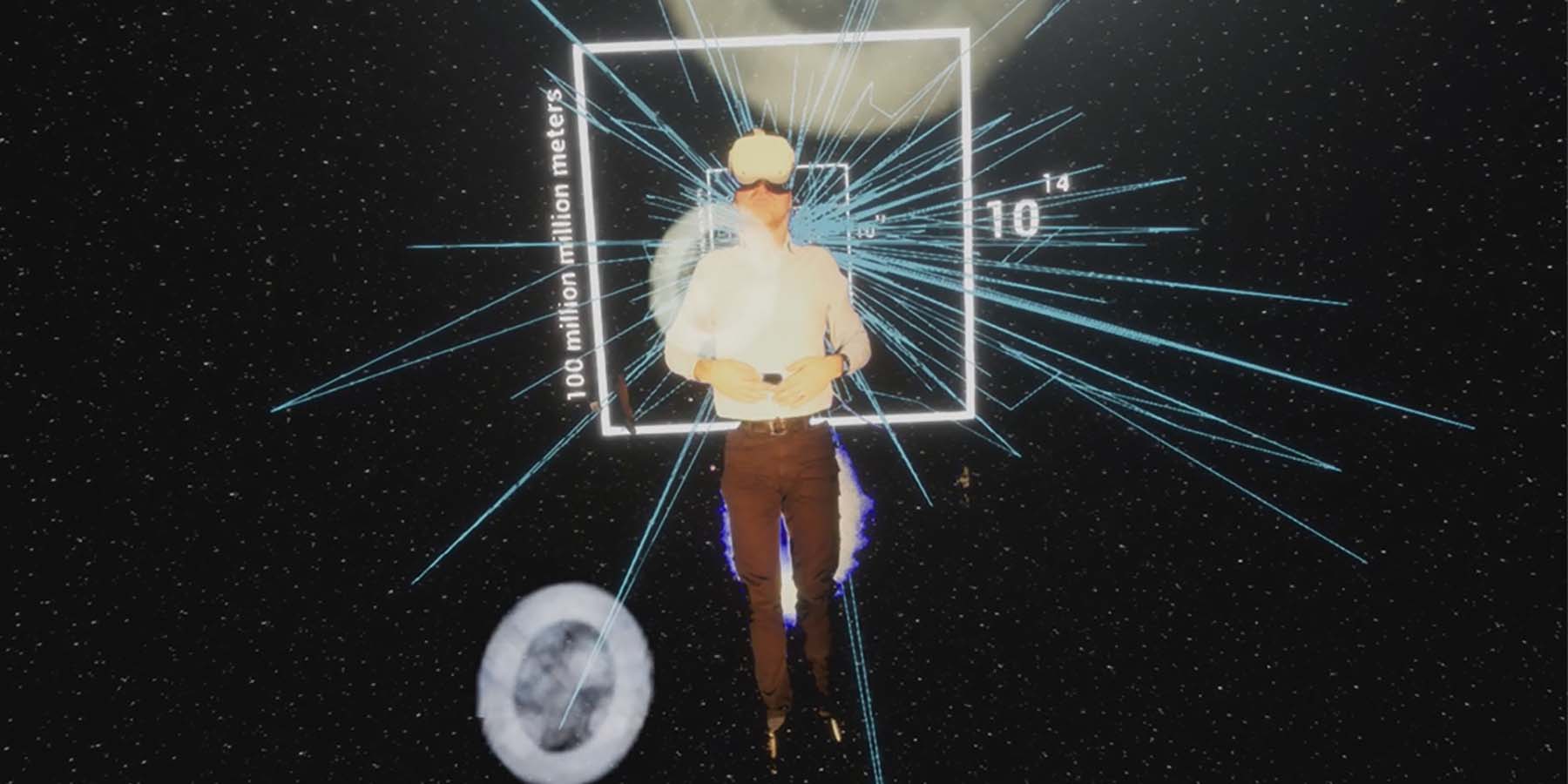The project underwent a meticulous design process. Gladwell drew inspiration from the famous short film ‘Powers of 10’ by Charles and Ray Eames and undertook extensive research into philosophical and scientific perspectives on death, drawing inspiration from thinkers like Baudrillard, Foucault, and Chalmers resulting in the conceptual design of the experience and exhibition space expressed in a briefing document.
During concept development, the team grappled with the delicate balance between crafting an immersive death experience without causing excessive distress to visitors. Research on palliative care helped us approach this responsibly and influenced the interaction design of the work and led to the inclusion of safety mechanisms to turn down the intensity of the haptic experience and controls to allow visitors to exit the simulation at any point, whilst also conceptualising the VR environment, experimenting with multiple sensory elements like visual aesthetics, haptic feedback, and sound design to create an immersive and transformative experience.
We involved participants in the user-testing phase to ensure safety and comfort, making adjustments based on their feedback through several iterations. This was pivotal in creating an experience that wasn't just technically sound but also emotionally resonant. This process allowed us to gauge user responses to the VR experience, and importantly, identify and mitigate any possible triggers of anxiety or panic.
The project achieved the design brief by successfully creating a meditative and introspective simulation of death that provoked visitors to contemplate their mortality and the essence of life. The final design was an amalgamation of art, user-centric design, high-end VR technology that was professionally executed and well-received, facilitated by a multidisciplinary team. The VR setup was in a designated space within the gallery, with the environment designed to resemble a hospital room equipped with heart rate monitors and VR headsets.

